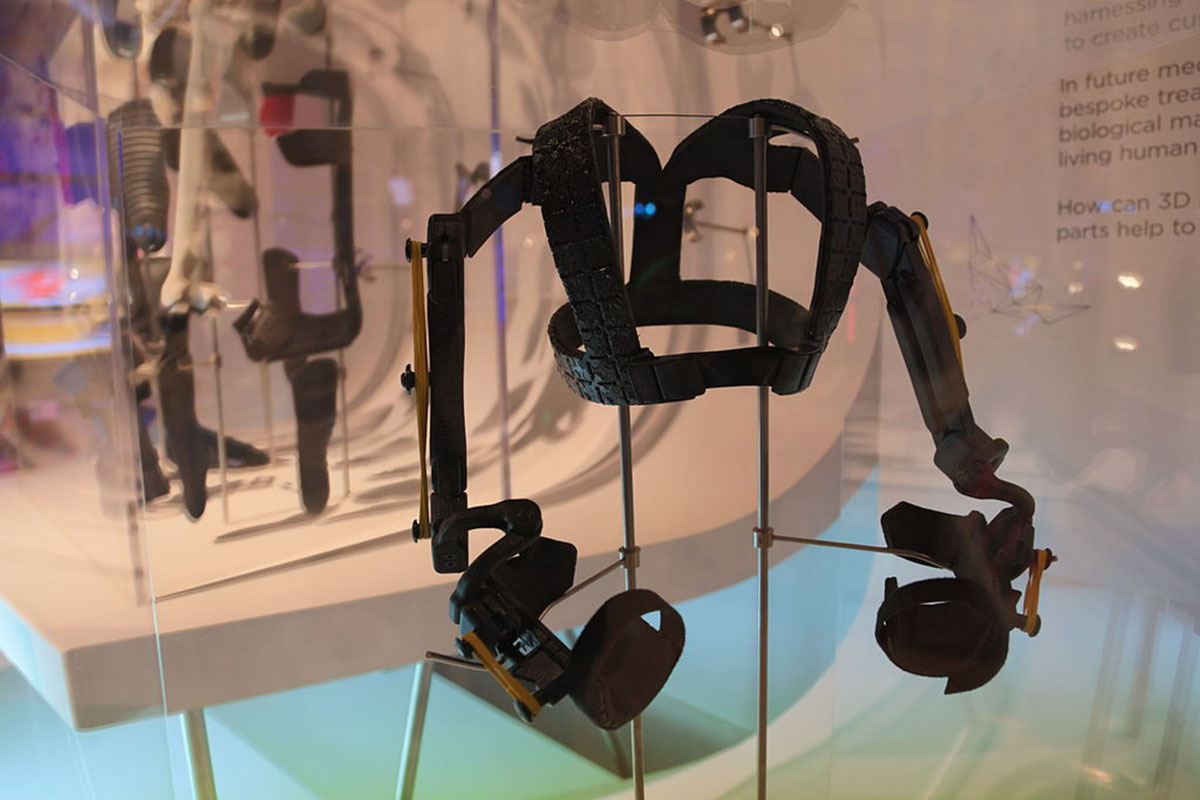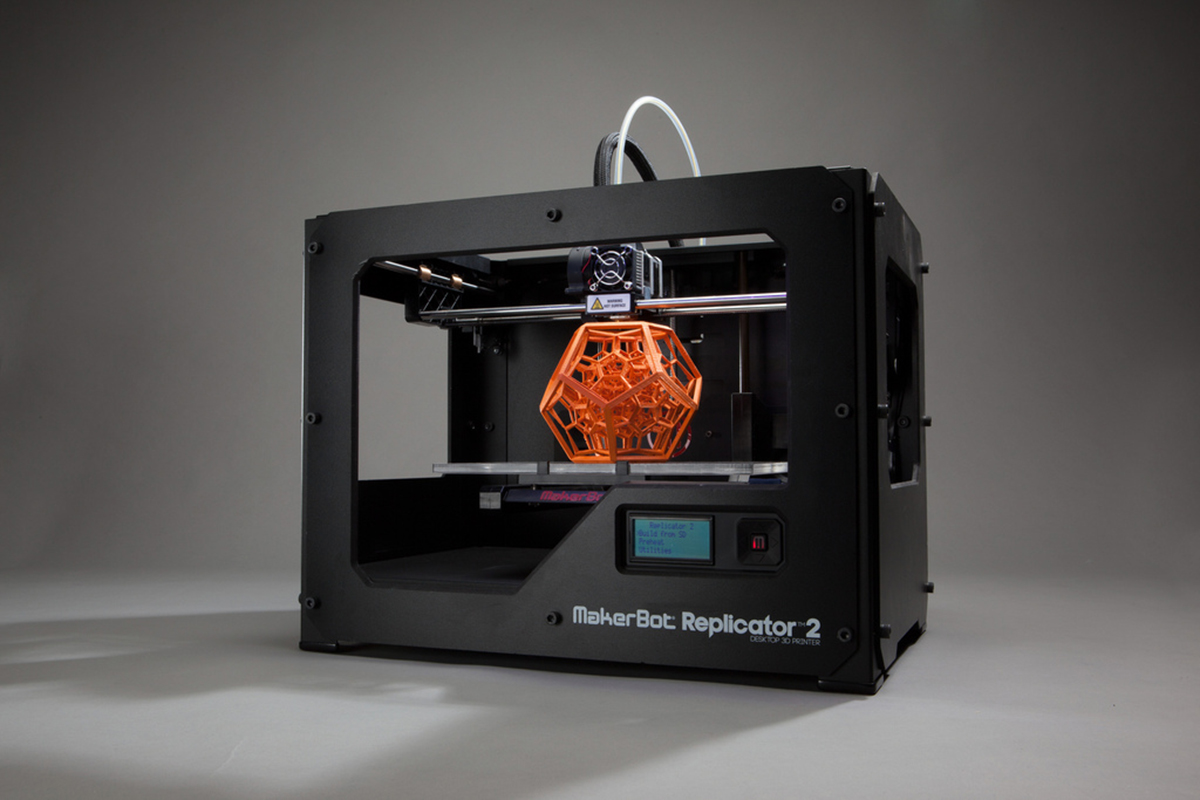Recently Ivanhoe News Service reported the remarkable story of Hannah Monn, a four-year-old girl born with a disease called arthrogryposis, a condition that affects muscle strength.

Affecting about 1 in 3000 infants, the condition is often diagnosed before birth, and it kills about 50% of infants born with it in the first year of life. Children who survive the first year of life with the condition have to deal with extremely weak muscles and stiff joints, and often have to endure multiple surgeries to have any motion at all.
Hannah survived infancy, but by the age of three she was essentially immobile. “She just really couldn't move at all,” Hannah's mother Jennifer told an Ivanhoe reporter.
Fortunately for Hannah, her mother Jennifer was able to get in touch with a developer of a new technology known as WREX, the Wilmington Robotic Exoskeleton.
Many Children Suffer Muscle Failure
Many children suffer from illnesses that rob them of muscle strength. In addition to arthrogryposis, Duchesne dystrophy and muscular dystrophy take away children's ability to walk, throw and catch a ball, play with toys, and any opportunity to learn to feed themselves and dress themselves and take themselves to the bathroom. Muscular diseases can make it impossible for a child to get a hug. But the Wilmington Robotic Exoskeleton adds power to muscles that parents never dreamed possible.
Because the WREX is made of plastic, it is lightweight and inexpensive. Because it can be printed out, replacing the device as the child grows is simple. And because the Wilmington Robotic Exoskeleton can amplify the powers of muscles, it can give children the ability to move their arms in ways their own bodies simply cannot accomplish. “To see her have the ability to reach her arms out, to reach out and grab something is just a really amazing feeling for a mom,” mom Jennifer Monn told a reporter.
See Also: Dutch Woman Receives 3D Printed Skull
WREX Is Also Being Made Available for Adults
Children are not the only people who can benefit from robotic exoskeleton devices. At least two adults who had arthrogryposis and one who had a spinal degenerative disease have been fitted with the device. Even in adulthood, it became possible for them to feed themselves, use a television remote, and operate a keyboard for the first time in their lives. An unexpected beneficial side effect of the use of the device was relief from the pain and inflexibility of contracted muscles, and a greatly reduced frequency of falls.
Is WREX Cyborg Technology?
Because WREX is a “robotic” technology, some casual readers might get the impression that using it turns a disabled person into a hybrid of human and machine, something like happens in science fiction movies. Nothing could be farther from the truth. Here are some important facts about WREX:

- WREX is a wearable device. It is more like a piece of clothing than a machine. The “exoskeleton,” unlike an insect's exoskeleton, does not completely cover the arm. It is worn over a shirt or blouse and consists of just a few (usually four) moveable plastic sleeves, extending around the arm, powered by rubber bands.
- Although the WREX could be motorized, it is usually powered by the tiny residual forces of the wearer's arms, magnified by the rubber bands distributed in just the right places on the exoskeleton.
- WREX greatly reduces the amount of power needed in the shoulders.
- WREX typically makes movements of the arms slower, but more purposeful. The hands move without tremors and it may become possible to pick up small objects.
- The WREX is fitted on a brace for users who can walk and on a wheelchair for users who cannot.
- In children, use of the WREX greatly increases participation in school—the child is able to raise his or her hand.
- WREX can greatly increase reaching distance. Users who were not able to pick objects off shelves and place objects on shelves sometimes gain these abilities with the use of the device.
- The WREX is helpful for people who are paralyzed on just one side of the body by stroke. It can be used as a training device that helps them relearn up, down, right, and left motions that their brains can no longer recall. These learned motions eventually become second nature with practice on the device.
- The T-WREX, or Training Wrex, is designed for at-home use, to reinforce the muscle movements learned with the help of a physical therapist.
- Use of the WREX may increase range of motion for the arms, but this range of motion is not unlimited. Usually the WREX can take the arms and hands into one of four positions.
- Some children don't want to look “handicapped” and refuse to wear the WREX in certain social settings. They have to use their own muscles, but sometimes they are more comfortable with difficult muscle movements than with the use of the device when they are around their peers.
See Also: Da Vinci Robotic Surgery: Pros and Cons
- The pivot post at the shoulder always has to remain vertical. If the post at the top of the WREX is moved out of alignment, users lose their sensation of floating because the device is not able to fight gravity for them.
- Right now, the Wilmington Robotic Exoskeleton is primarily used to help people who have athrogryposis. Due to the limited availability of the device, it is generally not yet available for people who had stroke or who have spinal injuries or cerebral palsy.
- Helping Hannah: 3D Printer to the Rescue. Ivanhoe News Service. 3 January 2014.: Rahman T1, Sample W, Jayakumar S, King MM, Wee JY, Seliktar R, Alexander M, Scavina M, Clark A. Passive exoskeletons for assisting limb movement. J Rehabil Res Dev. 2006 Aug-Sep. 43(5):583-90.
- Photo courtesy of John Cummings by Wikimedia Commons: commons.wikimedia.org/wiki/File:WREX_exoskeleton_at_the_3D,_printing_the_future_exhibition_at_the_Science_Museum,_London.JPG
- Photo courtesy of Creative Tools by Flickr : www.flickr.com/photos/creative_tools/8080028846

